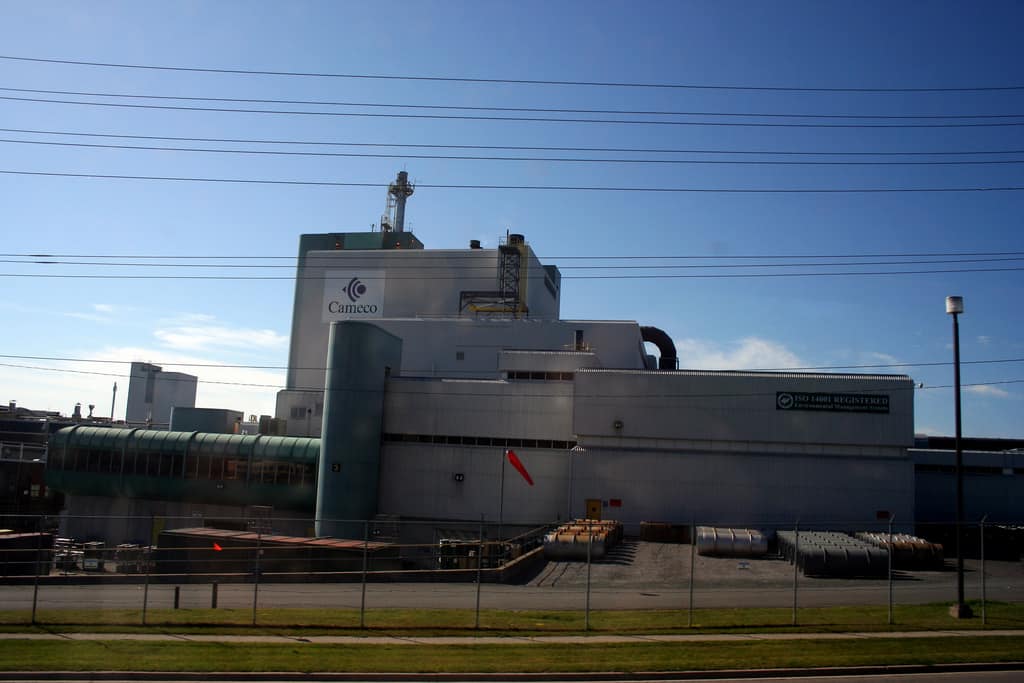Cameco Corp. (TSX:CCO)(NYSE:CCJ) stock rallied over 10% upon management releasing an important update during the announcement of its weak second-quarter 2018 results on July 26. The stock is holding on to some of its outperforming gains so far, up 24.6% year to date. Should investors expect further gains over the remaining months of this year?
Skepticism over Cameco’s stock valuation remains high — especially after early recovery strategies for the uranium industry centered on production cuts failed to generate any traction on the market price front over several months, and the state of general decline continues to show its beastly face on the nuclear market horizon.
Rally catalyst
The latest news that Cameco has decided to extend the suspension of production from McArthur River mine and Key Lake milling plant is the latest trigger of a general rally in world uranium stocks. The word that the planet’s best uranium resource will continue being placed under care and maintenance did flash a ray of hope in the bullish camp that, this time, a recovery in spot and long-term contracting prices will show a sustained momentum, as significant mine production will remain offline for longer.
Significant challenges to a broader market recovery remain, the biggest one of which is the continued absence of volume tackers in the long-term contracting segment of the market, with the company reporting that “the volume of long-term contracting reported by UxC for the first six months of 2018 was about 16 million pounds compared to about 54 million pounds reported over the same period in 2017. Volumes continue to be less than the quantities consumed, and remain largely discretionary due to currently high inventory levels.”
The uranium market is yet to pick up and may continue to be subdued for longer.
That said, there was some soothing news from the company during the earnings announcement that could sustain some hope to its shareholders.
Improved revenue and cash flow guidance for 2018
Cameco updated its revenue guidance for 2018 from $1.8-1.93 billion to $1.89-2.14 billion, and this is a significant change in its financial outlook. Further, cash provided by operations in 2018 is expected to be 20-30% higher than its level in 2017, even after a 56% plunge in second-quarter operating cash flow cash flow (as compared to the same quarter last year).
The company is expecting a jump in contract uranium deliveries over the two remaining quarters of 2018 due to changes in client requirements and preferences.
Management did not show further aggressiveness in revenue-recognition attempts during the second quarter, but the anticipated jump in contract deliveries, which lifted revenue guidance, could lead to the same effect, but this time it’s probably a result of changing client preferences.
That said, the company’s expected delivery volumes guidance for 2019 has got me scared. The company is expecting to deliver 25-27 million pounds of uranium next year, down from 34-35 million pounds expected for this year. At this rate of contract volume depletion, can the company pull another five years if conditions don’t improve?
Realizable prices from contracted supplies continue on a sliding path, while severance costs for dismissed employees will negatively impact cost of sales per pound of uranium for this year.
Indefinitely placing McArthur River mine and Key Lake mill on care and maintenance will continue to cost between $5 million and $6 million a month until there is a tangible recovery in uranium contracting market prices. That’s a tough condition for resuscitating the world’s best high-grade uranium mine with no near-term indications of a return to uranium price growth.
Foolish bottom line
It hurts to see the uranium mining giant going down like this, but it’s also encouraging to see that management is doing the best it can to save the big ship. One thing is certain though: the continued surplus supplies on the spot market require that some uranium miners die for the industry to survive, but who is willing to be sacrificed for the greater good?
Cameco’s stock valuation has only hope to sustain it right now. If you can’t stomach large losses, its better to avoid high-risk stocks like this one, as a negative CRA case outcome could set you back significantly.









